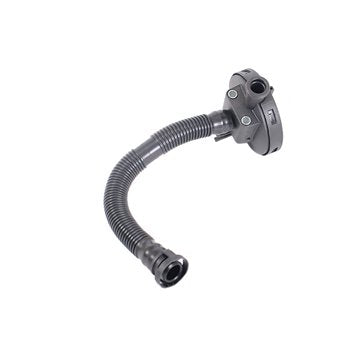Minimize downtime by using a well-maintained clp engine.
Minimize downtime by using a well-maintained clp engine.
Blog Article
How a Clp Engine Can Enhance Efficiency in Various Industries
The advent of CLP engines notes a significant shift in operational performance across different sectors, driven by their capacity to maximize gas usage and reduce downtime. As companies significantly focus on sustainability alongside efficiency, the function of CLP engines becomes even more critical.
Review of CLP Engines
CLP engines, or Constant Fluid Propellant engines, represent a considerable innovation in propulsion modern technology, specifically for room applications. These engines use a continuous feed system that permits for the continual expulsion of propellant, bring about enhanced performance and efficiency compared to standard strong or hybrid propulsion systems. By preserving a consistent circulation of liquid propellant, CLP engines can achieve much more exact thrust control, which is crucial for navigating spacecraft in different mission circumstances.
The layout of CLP engines incorporates advanced materials and ingenious fuel administration systems. clp engine. This causes minimized weight and increased integrity, crucial factors for long-duration area missions. Furthermore, the continual operation decreases the risk of combustion instability, a typical difficulty in standard rocket engines.

Benefits in Manufacturing
The production of Constant Liquid Propellant (CLP) engines presents numerous remarkable benefits that boost both effectiveness and cost-effectiveness. One of the main advantages is the structured manufacturing process, which reduces the complexity linked with standard propulsion systems. By making use of fluid propellant, makers can achieve greater accuracy in engine performance, leading to maximized power result and reduced waste.
Additionally, CLP engines help with a higher degree of modularity, allowing for easier assimilation into numerous manufacturing lines. This versatility can dramatically reduce lead times and improve overall operational adaptability. The use of CLP modern technology also tends to reduce the need for comprehensive maintenance as a result of less moving parts, which equates into minimized downtime and functional prices.

Applications in Logistics
Leveraging Constant Liquid Propellant (CLP) engines in logistics offers significant benefits in operational effectiveness and reliability. These engines offer a durable solution for numerous transportation requirements, making it basics possible for the smooth motion of items across substantial distances. The integral design of CLP engines permits for constant power result, which equates into smoother and much more predictable transportation routines.
Among the vital applications of CLP engines in logistics is in heavy-duty freight transport, where they can drive both ground and aerial lorries. Their capacity to maintain high performance under differing tons conditions makes certain that delivery timelines are satisfied, therefore boosting consumer contentment. Furthermore, CLP engines can be incorporated right into automated logistics systems, promoting real-time monitoring and optimizing course planning.
Additionally, the sturdiness of CLP engines minimizes upkeep downtime, allowing logistics companies to maximize their functional abilities. This is especially advantageous in warehousing operations, where performance in managing and carrying items is critical. As logistics proceeds to develop, the assimilation of CLP engines stands for a forward-thinking approach that not just improves efficiency however also supports the market's growing demands for reliability and rate.
Effect On Power Efficiency
Just How do Continual Fluid Propellant (CLP) engines improve power efficiency in transport? CLP engines use a consistent circulation of fluid fuel, maximizing combustion processes and keeping a secure thrust output. This style lessens energy losses connected with typical combustion engines, where gas shipment Visit Your URL can vary and result in inefficiencies.
The constant procedure of CLP engines enables a much more effective thermal cycle, causing higher specific impulse compared to conventional engines. clp engine. This converts to minimized gas intake for the exact same quantity of job done, substantially reducing functional costs across various transportation industries, including air travel and maritime markets
Moreover, the capability of CLP engines to keep ideal performance under differing tons problems minimizes the demand for frequent acceleration and deceleration, better enhancing fuel performance. Enhanced power effectiveness not just adds to cost financial savings yet additionally results in decrease greenhouse gas exhausts, aligning with worldwide sustainability goals.
Future Trends and Innovations
Arising developments in Constant Fluid Propellant (CLP) engine innovation guarantee to reinvent the landscape of transport performance and sustainability. As industries pivot towards greener options, CLP engines stand at the forefront, incorporating ingenious products and design approaches that boost performance while lessening environmental effect.
Among one of the most encouraging trends is the adoption of crossbreed systems that combine CLP engines with renewable resource resources. This harmony can enhance fuel usage and reduce emissions, aligning with global sustainability goals. Innovations in computational fluid dynamics (CFD) are assisting in the style of even more aerodynamically efficient engines, leading to decreased drag and boosted gas effectiveness.
Furthermore, the growth of clever tracking systems is readied to improve functional effectiveness. These systems utilize data analytics and IoT innovation to enhance engine efficiency in real-time, making sure that the engines run within their most reliable specifications.
As research study remains this link to explore alternative propellant solutions-- such as biofuels and synthetic gas-- the future of CLP engines looks encouraging. By harnessing these innovations, industries can not just enhance their effectiveness but also add substantially to a cleaner, extra lasting future in transport.
Conclusion
In verdict, CLP engines represent a substantial improvement in effectiveness across numerous markets. The integration of innovative products and less relocating components reduces upkeep requirements, while placement with sustainability objectives placements CLP engines as a pivotal modern technology for the future.
Report this page